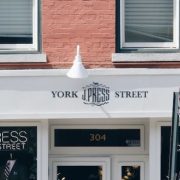The best of both worlds: mixed use property investment
Mixed use properties offer a way to invest in both the residential and commercial property markets. While commercial loans often have higher interest rates than a home loan, the current low-rate environment and high rates of return could mean now’s your time to consider the pros and cons of mixed use property investment.
When a property has been zoned as suitable for more than one purpose, chances are it needs to be financed using a mixed use property loan. This type of property is most commonly a mix of residential and commercial – a ground floor business with an apartment above it, for example.
Traditionally, mixed use property investment has been seen as riskier and more complicated than properties that are one specific type. However, the upside is that commercial properties tend to offer higher rental returns – recently yielding a 7% average return, as compared to 3.9% for residential.
Whether you’re investing to rent out to somewhere else, or as a place to live and work at, there are definite upsides to mixed use commercial and residential real estate.
A growing demand
According to a 2017 survey, a majority of people from millennials to seniors prefer to live in urban lifestyle centres that boast mixed-use properties.
Millennials are especially drawn to the easy commutes and lifestyle options of these areas. For older Australians, having everything they need close by means less time getting to what they need, and a more comfortable retirement.
Mixed use properties reduce urban sprawl and are less likely to be new builds – which increases their sustainability credentials, too.
New ways of working also benefit from mixed-use developments. A lean and agile e-commerce start-up doesn’t need a large building full of people. The idea of a ground-level working space with a family townhouse above might be very attractive to some business owners.
Likewise, people who are part of the gig economy who work from home can now set themselves up a separate work space to where they live, while still taking a commute out of the equation.
Global trends point to a continued rise in people embracing flexible, remote ways of working. In fact, the COVID-19 pandemic has led to many people moving to work-from-home arrangements, and research suggests some could stick with it. A recent survey found that 74% of CFOs are already looking to continue to work remotely after the pandemic is over. This would lead to a surge in demand for property that can fit both work spaces and living spaces.
Becoming a mixed use property investor
Beyond a potential increase in rental yield, there are a range of benefits to investing in mixed-use property.
Tenants of mixed-use properties tend to be good at keeping their rental property clean and well-maintained, especially if they’re using it at a shopfront, or are running a business that requires clients or customers to visit. Landlords of mixed use properties can also avoid some restrictions and costs that residential landlords face.
If you’re looking for somewhere to invest, location is just as important as with investing in residential property. Because people will be living and possibly raising a family, it can pay to choose somewhere close to parks, schools, supermarkets and recreational facilities.
But because it’s also a place of work or shopfront, you’ll need to balance that out with the potential need for a tenant to be close to a business district, main street or shopping precinct. In Melbourne, for example, popular locations include gentrified city fringe areas and outer-suburban planned communities.
As with any investment, do your due diligence to ensure it’s a sound one. Ask to see past leases, the rent records, operating statements and information regarding any periods of vacancy. Do your research into what tenants are being asked to pay for other mixed-use properties in the area you’re looking to invest.
This is all important information when you’re making a decision about where to invest, but it also plays a big part in securing a loan, as a lender will want to know the property’s income can cover your expenses. The capitalisation rate – the value of the property divided by the net operating income – is another factor considered.
Turning two payments into one loan
Investing in mixed-use property as an owner-occupier – rather than to rent out – can be very appealing for small business owners. It’s long been common practice for some small business operators to live above their premises, but that hasn’t always made for a comfortable lifestyle.
However, new builds and modern renovations to mixed use property – especially in gentrified inner-city suburbs – ramp up the sophistication and style beyond that of a cramped workers flat above a traditional shop front.
By owning one property that houses both your home and your business, you can streamline two payments. Instead of paying off a mortgage or renting a home, and also paying a commercial lease or loan on a business premises, it could make sense to combine. One single mortgage on a mixed use property can be a win-win from both a financial and a lifestyle perspective.
Getting in the zone
Before you choose to invest, make sure you understand the complexities that come with investing and/or living in mixed use property. The classification of your property will be decided by your lender. Some will classify it as commercial lending, because of zoning, but some may offer a residential loan.
As commercial loans are seen as higher risk, they tend to come with lower loan-to-value ratios, which means you’ll need a larger deposit saved. Commercial loans can also come with higher interest rates and shorter payment terms.
If the property is a house that is being used for commercial purposes, and could be converted back to purely a residential property down the track, you might be able to borrow with a higher Loan to Value Ratio of 90% by entering into a residential loan agreement.
There can be some added issues if you’ll be using one part of the property yourself, and renting out the other. Having your business downstairs and renting out the residence, or living upstairs while renting the bottom floor to a business could limit the amount you can borrow.
Ultimately, lenders will come to the table with an understanding of the increased risks of commercial property, and each will have their own set of criteria and a risk matrix to follow.
So, there’s the basics. Putting money into mixed use property could be a great investment or lifestyle choice, especially given the trends towards more and more people wanting to work from home. But it can also be a more complicated option than choosing either residential or commercial investment over the other.
If you want to know more about your options when it comes to purchasing or investing in mixed use property, speak to a qualified mortgage broker today.




